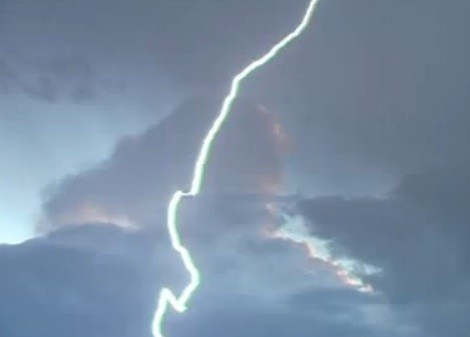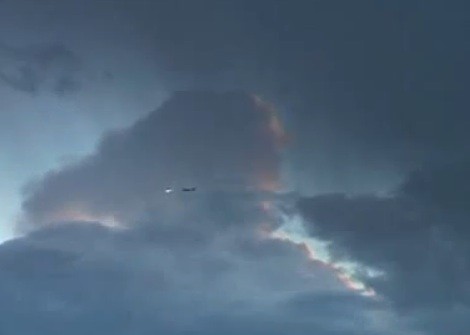The lightning strike on the Queensland’s Premier’s turbo-prop King Air yesterday could have been serious but for two thin metal wicks no longer attached to the King Air 350 in which she had been visiting towns devastated by the floods.
These static wicks, like those fitted to passenger aircraft of all sizes play an important role in discharging the potential for the electrical ignition of fuel vapor by sparking upon a mid-air lightning strike. The sort of jump start you don’t want in flight.
The surviving wicks on the wing of Premier Anna Bligh’s aircraft are shown below in one of the photos released by her publicity machine.

But what worked perfectly for the state Premier, her flood disaster chief Major-General Mick Slater and the crew of the state’s government aircraft dates back to 1965, when the US Federal Aviation Administration made their installation compulsory following an inquiry into the crash of Pan American flight 214 in 1963, which killed all 81 people onboard.
Pan Am 214, a Boeing 707-121, was in a holding pattern waiting to land at Philadelphia because of thunderstorms that were delaying traffic when it was struck by lightning.
There was a fuel vapor explosion in one of the jet’s tanks, causing so much damage the crew immediately lost control. Since that crash very few airliner crashes have been attributed to lightning strikes, and they include accidents where the role of lightning is controversial or unproven.
Most lightning versus jet videos are also controversial, but nevertheless interesting.
[youtube]https://www.youtube.com/watch?v=pDTDt2NZLmM[/youtube]
One of the most famous (above) shows an All Nippon Airways 747 being struck soon after takeoff. Allegedly at Newark, or Osaka, or Dayton, and also as a freighter flown by a different company, and by Japan Air Lines! One of the fastest way for facts to become blurred, misinterpreted or misidentified is for the viral distribution of the file to spread faster than the will or ability to fact check.
However it is an All Nippon freighter, and it was completely unharmed, except possibly for a missing wick or two.
[youtube]https://www.youtube.com/watch?v=036hpBvjoQw[/youtube]
A more intriguing viral amateur video (above) shows a Qantas flight taking a hit, dated September 2004 and either taking off or landing at an Australian airport, said in one case to be Sydney, although there is no skyline detail to confirm this.

Going through the video by the frame, it does appear that the lightning was conducted through the length of the metal outer skin of the jet. There is also a bright spot that appears at the rear of the jet and a fraction of a second later, hangs in the air behind it, which may be a rare capture of a form of ball lightning, which is a phenomenon so transient it is rarely imaged. The air immediately behind the jet would be turbulent, making the fleeting integrity of the bright spot very interesting,









Crikey is committed to hosting lively discussions. Help us keep the conversation useful, interesting and welcoming. We aim to publish comments quickly in the interest of promoting robust conversation, but we’re a small team and we deploy filters to protect against legal risk. Occasionally your comment may be held up while we review, but we’re working as fast as we can to keep the conversation rolling.
The Crikey comment section is members-only content. Please subscribe to leave a comment.
The Crikey comment section is members-only content. Please login to leave a comment.